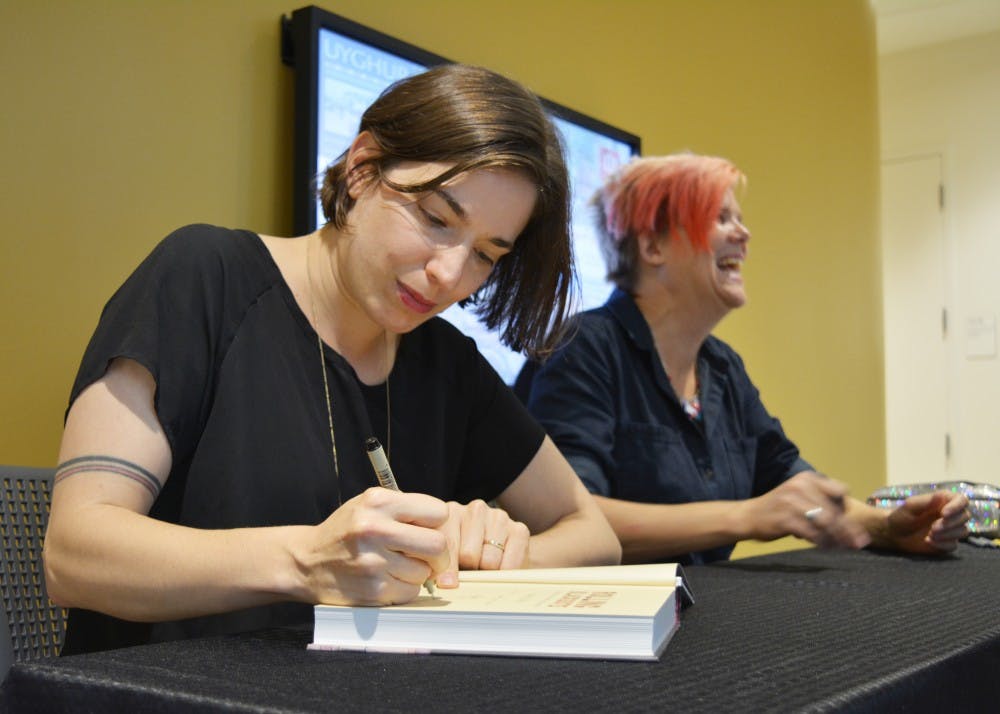Cartoonist Sarah Glidden said her most important tools were her sketch book, tape recorder and camera when researching in Syria and Iraq. On her trip, she recorded hundreds of hours of audio tapes and transcribed them all when she returned to the states.
From there, she decided what to include in her graphic novel “Rolling Blackouts.”
“It was a functioning country,” Glidden said. “It was not a place destined for war. These were cities where people were living their life.”
Students packed into a lecture hall in the Global and International Studies building Monday evening, some sitting down along the walls when the seats were all taken. They came to hear a talk given by Glidden and Kate Evans. The two cartoonists came to talk about their recent graphic novels on the refugee crisis.
Glidden talked about her book in which she describes traveling to Syria and Iraq with two of her friends, journalists for the Seattle Globalist, Glidden said.
“People think of refugees as an ‘other,’ someone they could never connect with,” Glidden said. “I wanted to show that we are all people.”
Glidden said the book took her five-and-a-half years to make.
Unlike Glidden who had gone her trip planning on writing a graphic novel Evans, a British cartoonist, did not. Evans traveled to the Calais Jungle, a refugee camp in France, to volunteer. It was only after returning to England that she decided to start drawing her experiences.
“Because of this I didn’t have prior consent,” Evans said. “So I changed looks, and tried to be vague in order to help protect their identity.”
Evans shared artwork and read aloud from parts of her book, “Threads from the Refugee Crisis.” Each page of the book was bordered by pictures of lace, which Calais is known for, Evans said.
Evans shared one of her sketches about the trip on her blog. The sketch included a segment about her conversation with a boy about her son’s age who was by himself. It crashed her site and was shared more than any of her other posts.
Glidden got into drawing comics by writing daily journal entries in comic strip form. She used her daily cartoons to experiment with various styles.
Previously, she wrote a successful graphic novels on breastfeeding and pregnancy, Evans said. She also wrote a biography on Rosa Luxemburg, a German-Polish Marxist theorist.
“I would form personal stories from political events,” Evans said.
She considers her books to be fact-based comics, Evans said.
Both Evans and Glidden said they have faced adversity from being cartoonists. Cartoons are often thought of as silly and not serious, often dismissed as a medium for superhero stories or manga.
Glidden said there is no correct formula for non-fiction cartoons. She knows cartoonists who puts footnotes and hyperlinks for everything they use, and others who use notes in the back of the book.
Glidden said she believes tone is most important, and that people can tell from the first few pages that graphic novels can be serious.
“I wanted things to be as realistic as possible,” Glidden said. “I have to build trust with the audience and reader.”






